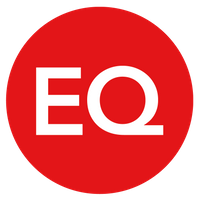Employee engagement reporting: how to use it to kickstart People Experience

People Experience. Oft spoken and written about of late. But faced with constant change, a myriad of conflicting priorities, tight budgets and scant resources, it no doubt keeps getting shifted down most corporate to-do lists. Yet it’s probably one of the most important business issues of our time. It should be the guiding principle where your people are concerned, helping improve recruitment, retention, productivity and profitability.
In short, it’s a leadership responsibility. And its success or failure ultimately rests on getting one thing right: ensuring employee voice.
Listening and acting on the employee voice
Employee voice represented a central component of the Corporate Governance Reform introduced in 2018 and, from this year onwards, a mandatory reporting requirement in all annual accounts for UK incorporated companies with 250+ employees (taking into account full time, part time, fixed term and zero hours contracts).
People Experience and employee voice are inextricably linked. To effect change on one, effects change on the other. What it basically boils down to is having good communications and listening skills. It’s really that straightforward.
So, where do you start? You’ve got to drop your pin somewhere. But this is a huge area. People Experience (aka Employee Experience, Employer Value Proposition, Organisational Wellbeing...it’s all the same, even though you’ll be baffled by some into thinking otherwise) requires a shift in mindset of the company, encompassing everything from employee hire to retire. This includes: onboarding; training and learning experiences; collaboration across organisational boundaries; helping ensure your people have – and take – opportunities to excel; trust in senior leadership; an inclusive environment; a strong customer focus. The list goes on...
Enjoying this article?
Read more on employee experience.
Find out what your peers are doing about the latest Corporate Governance Reforms. Ask them about their approach on rebaLINK, our networking and due diligence platform.
Contact the Associated Supplier to discuss employee benefits.
Read on for Andrew Woolnough’s tips on what to do now.
To help focus the mind. Let’s consider some of the biggest people issues facing companies at the moment. Analysis by Oxford Economics in 2014 showed that staff turnover is costing the UK around £4bn a year. And churn is increasing. It costs about £30,000 per person each time someone leaves. That excludes salary – it can take five to six months for people to simply become profitable.
Meanwhile, two in five employees report experiencing poor mental health symptoms related to work in the last year, according to Business in the Community’s Mental Health at Work (2019) report. Over four fifths of employees are “not engaged or actively disengaged at work,” reports Gallup’s State of the Global Workplace (2017) research. While Dame Carol Black’s Working for a Healthier Tomorrow (2008) review states that the annual economic cost of sickness absence and presenteeism is estimated to be more than £100 billion.
Employee benefits can be used to help ensure improvements across all these areas. Your employee benefits programme has the potential, if you take the trouble to listen to your employees, to help drive a culture of physical, emotional, financial and social wellbeing.
So, why not start there.
Employee benefits: a more insightful approach
If you throw enough mud at the wall, some of it will stick. That’s one way of rolling out an employee benefits programme...It’s not the best but, arguably, it’s been the way for the vast majority of companies for many years now, where employee communications are concerned at least.
Consider the evidence. Traditionally, programmes are primarily tailored to the employer’s need: budgets, duty of care and health and safety responsibilities, statutory requirements etc. It’s rare, if ever, that employees are consulted prior to designing such a programme.
Arguably Flex puts that choice firmly back in the hands of employees. But, on the other hand, once a year, one-size-fits-all benefits communications do little to raise awareness, never mind usage and value.
The best way of getting your mud to stick, getting your benefits used and appreciated, is to first understand which benefits are relevant to your people and second, to help them understand what advantages they will bring to them as individuals. What will benefit them in the work they do, the quality of their work life balance and the pride they feel in work.
What you need to do now
- Work with your C-Suite to consider how your company is going to evidence employee engagement in its 2020 annual report, in line with The Companies (Miscellaneous Reporting) Regulations 2018.
- You’ll need to show: how your company engages with employees; how leaders have taken on board employee views; and the effect this has had on decision making.
- Consider focusing on employee benefits: making much better use of what you’ve got. This starts with employee insights.
- Utilise various data sources to gain an understanding of your employees. As well as using engagement surveys to identify any potential hot spots, consider using some of the latest tools to gain a really detailed picture of who’s currently using – and who might gain value from – which benefits and why. Also consider information consuming habits.
- Taking into account business and HR goals and objectives, develop a communications plan that helps facilitate employee behaviour change: encouraging benefits usage and value and, ultimately, providing the foundation for People Experience.
- Last but not least, get to know your internal communications manager, if your company has one. They will be your friend and ally throughout all of this, with the strategic know-how to make it happen. If not, speak to a HR solutions consultancy that understands how and why everything starts with employee insight.
The author is Andrew Woolnough, director – HR solutions, Equiniti.
This article is provided by Equiniti.
Supplied by REBA Associate Member, Equiniti
Hi we are EQ; some may know us as Equiniti! We provide specialist reward, benefits and payroll solutions.







